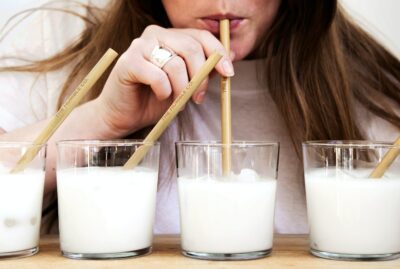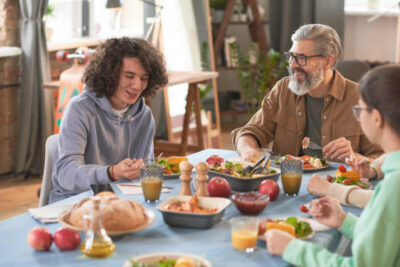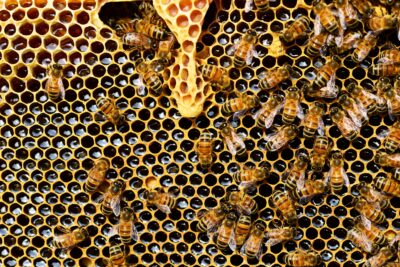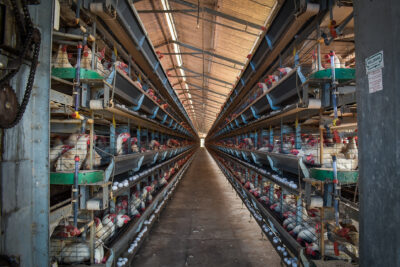Once upon a time, the vast majority of people drank milk from a cow without giving it a second thought. A few crazy vegan weirdos (as they were typically perceived back then) drank soya milk instead, but they were few and far between. Fast forward to now and if you look in supermarket baskets and trolleys, you’ll frequently spot a carton of oat milk in there even if the shopper is also buying meat. It’s not just crazy vegan weirdos who have ditched dairy, loads of people are doing it.
What Are Dairy Products?
Anything that is made from animals’ milk is classified as a ‘dairy product’.
It’s not all animals’ milk that humans drink, it’s only the milk from cows, goats, sheeps and, in some parts of the world, camels. (One other specific product, Mozzarella cheese, is made from the milk of a water buffalo. Yes – random.) Why are people happy to drink the milk of cows, sheeps, camels and goats but would baulk at the thought of drinking milk from a hippo, a kangaroo, a pig, or a human? If you think about it rationally, it doesn’t make sense.
What Is A Dairy-Free Diet?
A dairy-free diet excludes any products made from animal milk:
- Milk (liquid, powdered, condensed)
- Butter
- Cheese
- Cream
- Ice cream
- Kefir
- Yoghurt, cream, ice cream
Also, products in which dairy products are an ingredient, including (but not limited to):
- Milk chocolate
- Cakes
- Desserts
- Some margarine
- Sauces and dressings
- Ready meals
And by-products of milk production:
- Lactose (a bulking and flavouring agent)
- Whey (often used as a protein supplement)
- Casein (a food additive)
Why Follow A Dairy-Free Diet?
There are several compelling reasons for adopting a dairy-free diet. Firstly, it’s worth pointing out that human beings are the only species to drink the milk of another species, and to drink milk after weaning. In nature, milk is designed for one specific purpose: for a mother animal (human or non-human) to feed her baby. It contains all the nutrients, hormones and growth factors the baby will need to grow strong and healthy and it helps strengthen the baby’s immune system. Milk is basically species-specific baby food. Adult humans definitely don’t need to drink it for either development or survival but if they did, surely they should drink human milk, not the milk of a cow, a goat, a sheep or a camel?
In our humble vegan opinion, a good reason to go dairy-free is because drinking the milk of another species, as an adult, is weird. But, we accept it has become normalised and it is going to take a while to dismantle. So, here are some other good reasons for going dairy-free:
Animal Welfare
It often comes as a surprise that cows don’t just spontaneously produce milk. Most people don’t realise the dairy industry involves extreme suffering, exploitation and a repeated cycle of pregnancy followed by maternal deprivation.
As with humans, in order for a cow to produce milk, she needs to have given birth. On dairy farms, female cows are typically artificially inseminated to make them pregnant. Once the calf has been born, he/she will be taken away so that the milk intended for them can be sold to humans. As with all mammals, mother cows have a strong bond with their baby and to have their calf stolen away causes them much distress.
If the calves are female, they will most likely be added to the dairy herd. If they are male, they are worthless to the dairy industry as they cannot produce milk. A small number may be kept alive for a few months and then slaughtered for veal, some may be reared for beef, but others will simply be shot. There have been reports of dead calves being given to fox hunts to feed the hounds.
Shortly after giving birth, the cows will be impregnated again meaning they are pregnant and being milked at the same time. This takes a huge toll on their bodies. Mastitis, a painful infection of the udders, is endemic on dairy farms. Relentless exploitation leads to cows becoming weak, lame and infertile and they are slaughtered at around six years of age. In the wild, cows can live to be more than 20.
Environment
It’s undeniable that dairy farming is complicit in climate change. About one third of manmade greenhouse gas (GHG) emissions come from animal agriculture and farmed cows are the biggest cause of the GHG methane, which they burp out as part of their digestive process. Methane is approximately 30 times more powerful at warming the planet than carbon dioxide (CO2). The United Nations says urgent steps must be taken to reduce methane in order to fight climate change. Dairy farms are also responsible for 23% of the ammonia emissions that come from livestock in the UK. Ammonia is a key air pollutant that can have serious impacts on human health and the environment.
Dairy farms are also linked to frequent and serious incidences of water pollution. This is because it is not uncommon for manure (poop) and slurry (pee and poop mixed with water) storage systems to be insufficient in size, or to fail. When it rains or there is a leak, vast amounts of cow poop and pee get washed into surrounding waterways. The toxic effluent can kill all the fish in a five mile radius. In the UK in 2022, there were 300 incidences of river pollution caused by farms with half caused by the dairy industry.
Additionally, farmed cows who aren’t raised on 100% pasture are given feed that can include soya from South America, which is a key driver of forest and habitat loss.
Health
Eating and drinking dairy products is absolutely not vital for good health, in fact on the contrary – avoiding them can give your health a boost.
Once touted as a panacea, dairy products have been linked to health conditions and diseases including acne, eczema and IBS as well as higher risk of bone fractures in women, liver cancer, breast cancer and prostate cancer. One study found that drinking whole milk is linked to higher risk of total mortality.
You can get all the nutrients you need from a well-planned, plant-based diet that includes whole foods, fortified foods and taking supplements to top up certain vitamins and minerals if necessary.
Milk Allergy & Lactose Intolerance
Some people cannot consume dairy products because they have either Cow’s Milk Allergy (CMA) or lactose intolerance. These conditions aren’t the same but may be confused as they share some symptoms. CMA is one of the most common childhood food allergies, it affects the immune system and is a reaction to proteins in milk. Symptoms include a rash, swollen eyes, runny nose and diarrhoea.
Lactose intolerance is caused by reduced ability to digest lactose, which is the natural sugar found in milk. It affects the digestive system, and symptoms include bloating, wind, diarrhoea and stomach pain. Adults and children can be lactose intolerant and it is particularly common in people of Asian, African-American or African-Caribbean descent.
What Are The Benefits Of A Dairy-Free Diet?
When you go dairy-free, you should start to feel better and look fresher. You can also reduce your carbon footprint and help animals by.
Is A Dairy-Free Diet Healthy?
Millions of people around the world are not just healthy but thriving on a dairy-free diet, whether through choice or necessity. Going dairy-free is a great way of improving various health conditions and reducing the chances of certain types of cancer, and it could potentially increase your lifespan.
What Happens To Your Body When You Eliminate Dairy?
Less wind, bloating, diarrhoea and stomach ache
Dairy products are a common trigger for IBS and upset stomach. When you go dairy-free, you should experience fewer tummy and toilet troubles.
Clearer And Calmer Skin
Dairy products have been found to cause acne and can potentially contribute to eczema flare-ups. Ditching dairy products from your diet should help your skin settle.
Lower Risk Of Some Cancers
Dairy products have been linked to breast, prostate and liver cancers. Cutting out dairy and switching to dairy-free alternatives potentially has a double benefit as some observational studies have found that eating whole soya foods, such as soya milk and tofu, may reduce the risk of breast and prostate cancer.
Reduced Environmental Impact
Farming cows for both beef and milk is terrible for the environment. Cows belch out enormous amounts of methane and poop out vast quantities of manure. Both of these things are creating havoc for the planet.
Reduced Animal Suffering
Dairy farming involves the exploitation of female animals and the death of their babies. It causes a massive amount of pain and suffering. There are so many plant milks and other dairy alternatives, why support cruelty when you can choose compassion instead?
Can You Lose Weight When Eating Dairy-Free?
The honest answer is cutting out dairy on its own may not make you lose weight if you’re switching to high fat/high sugar equivalents. But as part of a low fat/low sugar healthy eating plan it should have a positive impact on your waistline and the bathroom scales.
What Are The Risks Of A Dairy-Free Diet?
Providing you eat a healthy, varied, predominantly whole-foods plant-based diet, you should be able to get most of the nutrients you need. A few may need a little extra work.
Protein On A Dairy-Free Diet
There are plenty of plant-based sources of protein. These include:
- The grains amaranth and quinoa, which contain all 9 essential amino acids so are ‘complete proteins’
- Pulses (beans, peas and lentils)
- Nuts and seeds
- Soya/soy beans (same thing, different spelling) AKA edamame beans
- Tofu and tempeh (made from soya beans)
- Some meat alternatives (burgers, sausages, mince, etc) are a good source of protein.
- Seitan (pronounced say-tan), is a high-protein meat alternative made from wheat gluten that is often used in Asian dishes
Calcium On A Dairy-Free Diet
Most non-dairy milks are fortified with calcium. Natural sources of calcium include:
- Soya products (e.g. tofu, tempeh, edamame, miso soup)
- Pulses
- Nuts (in differing quantities, almonds are particularly high)
- Seeds (also in differing quantities, chia and flax being good sources)
- Dark green leafy veg (e.g. kale, broccoli, spinach, spring greens, okra, Brussels sprouts)
- Figs, oranges, blackcurrants, blackberries and raspberries
Iodine On A Dairy-Free Diet
Iodine is a mineral that you do need to pay attention to in order to get the recommended daily amount. There are plant-based sources, but if you can’t guarantee eating enough on a regular basis, it is a good idea to take a supplement. Dairy-free sources of iodine include:
- Dried sea vegetables e.g. dulse, kelp, nori
- Strawberries, prunes and cranberries
- Organic potatoes with their skins on
- Green beans, corn, spring greens and watercress
- Iodisied salt
Vitamin B12 On A Dairy-Free Diet
It is true, if you cut out dairy, you are going to have to pay attention to getting enough vitamin B12. There is one easy way to do this, and that’s by eating yeast spread (e.g. Marmite). But what if you don’t like it? Then you’ll need to ensure you’re eating foods that have been fortified with B12 (e.g. plant milks, some breakfast cereals, nutrition yeast AKA ‘nooch’) or take a supplement.
What Are The Alternatives To Cow’s Milk?
There are so many alternatives to cow’s milk! Milk can actually be made from any nut, grain or seed – you can even make it at home (it’s a fairly easy process that involves soaking, blending and straining). All of the different plant milks have different consistencies and flavours and some are better suited to certain things, such as adding to cereal and hot drinks, than others. They also have different nutrient, fat and protein contents. Here are some of the most common alternatives.
- Almond milk – works great in hot drinks and on cereal
- Cashew milk – rich and creamy, can be used for making cashew cheese
- Coconut milk – delicious if you like the flavour of coconut
- Hazelnut milk – perfect for desserts and baked goods
- Hemp milk – a complete protein & source of Omega-3; more of an acquired taste
- Oat milk – the go to non-dairy milk, works in everything
- Pea milk – a similar taste, colour and consistency to cow milk
- Potato milk – a new kid on the block, an acquired taste
- Quinoa milk – a mild, nutty flavour; rich in nutrients and a complete protein
- Rice milk – less creamy, less suitable for hot drinks
- Soya milk – useful for everything, should be a staple in the vegan fridge/pantry
What Foods Can You Eat On A Dairy-Free Diet?
If you decide to go dairy-free, you will still be able to eat a wide variety of delicious foods and, in fact, most of your favourite dishes (with an adaptation or two). You’ll be able to bake cakes, make pancakes and whip up delicious desserts – there’s even dairy-free squirty cream. Providing you have access to a decent supermarket, a health food shop or online delivery, you should be able to eat a dairy-free version of almost anything you fancy and your diet won’t be that different from anyone else’s. Oh, and in case you’re wondering, you can eat peanut butter, because it’s not really butter.
What Types Of Foods Are Dairy-Free?
These days there is a dairy-free version of almost everything, from butter to chocolate buttons, cream cheese to ice cream, tangy, melty dairy-free cheeses that are perfect for pizzas and plant milks for hot drinks and cereal.
That said, sometimes vegan alternatives don’t taste exactly the same as their dairy counterparts. This is certainly the case with vegan cheese. It will have a different flavour and a slightly different texture, and it may take you a while to get used to it. But, it’s also cruelty-free! So remind yourself of that if you need some motivation to accept the difference. If you try vegan cheese and think ‘yuk’ rather than ‘yum’, go without it for a few weeks. You can do it! As your attachment to dairy cheese lessens, you are more likely to accept vegan versions.
Some supermarkets are starting to stock cashew nut cheeses made by artisan producers, which are really tasty. If you’re feeling adventurous, give them a go and enjoy them for what they are rather than expecting them to be identical to animal cheese. You can also support small businesses by ordering them online.
What Foods Can’t You Eat On A Dairy-Free Diet?
We’ve covered the obvious foods you’ll need to avoid on a dairy-free diet, it’s basically animal milks, all the products that are made from them, and dairy-derived food additives. If it comes from an animal, it’s a no.
Can You Eat Ghee On A Dairy-Free DIet?
No. Ghee is clarified butter, so it’s not suitable for a dairy-free diet.
Can You Eat Eggs On A Dairy-Free Diet?
It depends. Dairy refers specifically to milk products, so this doesn’t include eggs. If you go dairy-free, you might also choose to give up eggs or you might not. Many people do as part of going plant-based or vegan, and we definitely advocate doing so, because egg production causes a lot of suffering.
What To Look For On Labels On A Dairy-Free Diet
If a product is labelled ‘vegan’ or ‘dairy-free’, it’s obviously fine. If the label says ‘may contain dairy’, this means the product has been made in a factory that also makes things with dairy ingredients and miniscule traces may be left on the production line. Unless you have a milk allergy, we say don’t worry about this.
You can also check the ingredients list. Because milk is an allergen, any milk products, milk byproducts and milk-based food additives must be highlighted on a label in a way that is easily identifiable at a glance. For example in bold, italics, CAPS, or underlined.
How Do I Start A Dairy-Free Diet?
If it feels less daunting, dip your toes into making new, dairy-free habits starting with a nice hot drink. All of the high street coffee chains offer a selection of plant milks and are experts at making coconut chai, oat milk latte and soya mocha. If you’re just starting out and you want a taster, this could be a good place to start. Bear in mind you will be used to your tea and coffee tasting a certain way and you will notice a difference when you change milks, but just because it tastes different doesn’t mean it tastes bad.
When you move on to making moo-free drinks at home, a safe bet is to use oat milk. It has a nice texture, a neutral flavour, and ‘barista’ versions are perfect for hot drinks and cereal. If you really find the taste too different then swap over gradually – start by using half cow half oat milk and then after a few cups, reduce the cow milk again. After a few more cups, your tastebuds should have adapted and there’ll be no looking back, we’re sure of it.
Plan Your Meals
Look at what you typically eat and the foods you already have in stock. Write out a menu covering a week (or longer, if you are very organised) to see what dairy ingredients you’re going to need to replace. If you’re already veggie, it will be relatively easy to swap out dairy products for dairy-free alternatives, if you’re a meat eater and looking to reduce or stop eating meat as well as going dairy-free, have a look at our shopping list for beginner vegans.
Enjoy Familiar Favourites
It’s a good idea not to make too many sweeping changes to your diet too fast as it might get overwhelming or you might feel you’re missing your favourite foods. Veganise your tried and trusted recipes with a little help from Google, if necessary.
Be Open-Minded
Treat going dairy-free as a new adventure in eating. Introduce some interesting new dishes into your culinary repertoire. Many international cuisines contain a huge selection of dairy-free (and meat-free) dishes, so get experimenting (or ordering in). These cuisines are particularly good:
- Thai
- Indian
- Vietnamese
- Korean
- Mediterranean
Choose Vegan
You should be able to find dairy-free milks, spreads, yoghurts, desserts, chocolate, etc in most big supermarkets. Smaller local branches won’t carry such a good selection. If you’re able to make a trip to a bigger branch, it’s worth going to stock up, and to explore the wide variety of vegan products that are now available. A lot of the dairy alternatives have a pretty long shelf-life. Plant milks are probably what you’ll use the most of, you can buy both fresh and longlife versions, the latter can be ordered online in bulk. You’ll also find dairy-free products in health food shops, but they do tend to be more expensive.
Dairy-free diet plan
There’s no need to feel daunted or overwhelmed when embarking on a dairy-free diet. Here are some suggestions to get you started:
Breakfast
- VFC Chick*n breakfast stack
- Dairy-free yoghurt with seeds, berries & maple syrup
- Vegan French toast
- Vegan pancakes
- Vegan fry-up
Lunch
- Spicy VFC Burrito
- Dairy-free cheese & pickle sandwich
- 3 bean soup with sourdough bread
- Hummus, beetroot & falafel kebab
- Turmeric chickpea Buddha bowl
Dinner
- VFC Chick*n Mac ‘n’ Cheese
- Pizza with melty dairy-free cheese (make your own, buy a frozen one or order in)
- Spinach & mushroom lasagna
- Satay sweet potato curry
- Bangers & mash
A lot of the pleasure people derive from dairy products comes from the texture as much as the taste. Dairy products are undeniably rich, creamy, fatty and satisfying. When putting together dishes, you can add satisfying creaminess with:
- Hummus
- Tahini
- Nut butters
- Puréed beans
- Ripe avocado
- Roasted aubergine
- Coconut milk/cream
- Dairy-free versions of cream, butter, yoghurt, etc.
Conclusion
There are compelling reasons for going dairy-free, and it gets easier to do so all the time. You’ll be able to enjoy most of your favourite foods, you’ll reduce your carbon footprint, you’ll give your health a boost and you won’t be contributing to cruelty to animals. What’s not to like about all of that?
